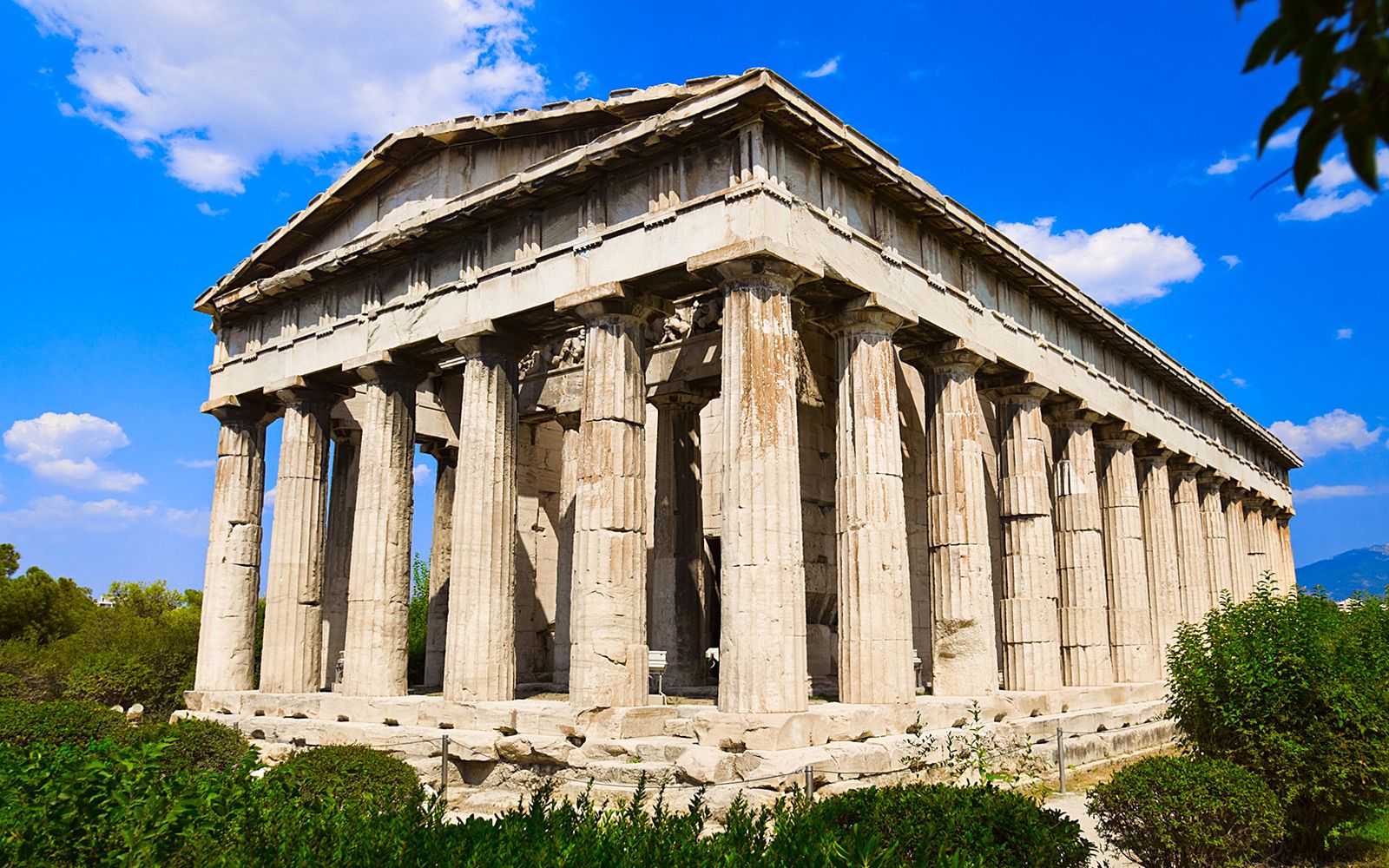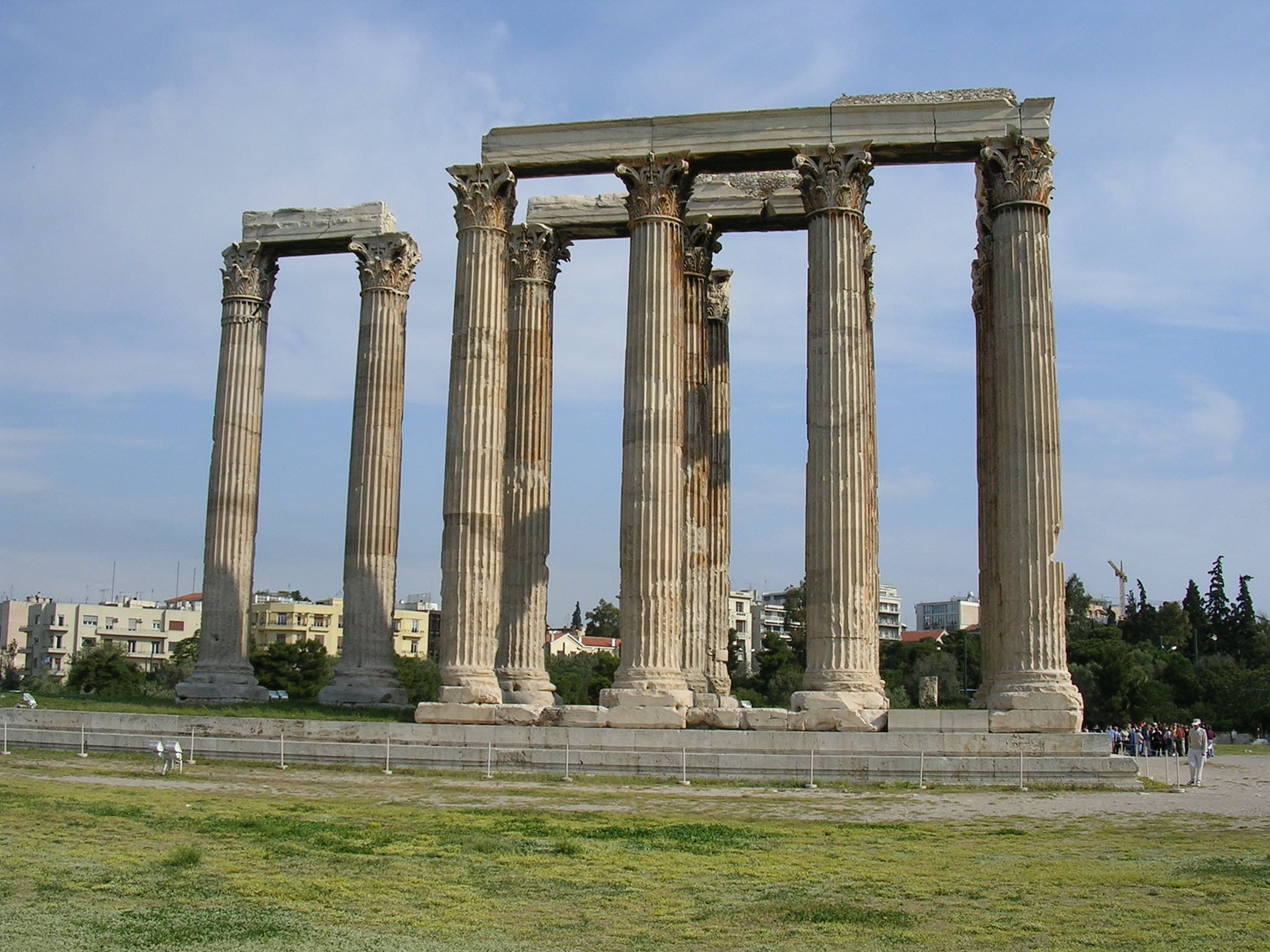|
Getting your Trinity Audio player ready...
|

Greece’s capital city Athens, with a history dating back more than 3,400 years, is among the oldest cities in the world. Athens, the cradle of democracy and Western civilization, is a historical and architectural treasure trove reflecting its rich and varied past.
With its Byzantine cathedrals, neoclassical structures, and historic ruins, the city provides travelers with an enthralling trip through time.
This article highlights Athens’ distinctive blend of historic legacy and contemporary vibrancy by examining some of the city’s most famous architectural and historical sites.
Contents at a Glance
7 Must-see Architectural and Historical Landmarks in Athens
1. Ancient Agora

The center of public life in ancient Athens was the Ancient Agora, which is located northwest of the Acropolis. This thriving civic hub and market served as the hub for social, commercial, political, and cultural activities.
The Stoa of Attalos, a restored Hellenistic colonnade that today houses the Museum of the Ancient Agora, and the Temple of Hephaestus, one of the best-preserved ancient Greek temples, are two of the Agora’s most notable landmarks.
The location also has a plethora of other ruins, such as the remnants of temples, government buildings, and monuments, which provide an amazing look into daily life in classical Athens.
2. Temple of Olympian Zeus

One of the biggest ancient Greek temples is the Temple of Olympian Zeus, or Olympieion. This enormous temple, which was devoted to Zeus, the king of the Olympian gods, is situated close to the city center.
The completion of the building was in the second century under the reign of Roman Emperor Hadrian, having started in the sixth century BCE.
Sixteen of the original 104 Corinthian columns remain, despite being substantially ruined throughout the ages, providing visitors with an appreciation of the temple’s enormous scale and magnificence.
The Arch of Hadrian, a triumphal arch constructed to recognize Hadrian’s contributions to the city, is also located at this location.
3. The Acropolis and the Parthenon

The most well-known and important historic site in Athens is the Acropolis, and no trip there would be complete without seeing it. The Acropolis, a UNESCO World Heritage site and a symbol of ancient Greek culture. Acropolis stands atop a rocky hill overlooking Athens.
The Parthenon, the focal point of the Acropolis, is a work of Doric architecture honoring the patron goddess of the city, Athena.
The Parthenon, which was built in the fifth century BCE during the height of the Athenian Empire, is a prime example of classical Greece’s creative and architectural accomplishments.
Other noteworthy buildings on the Acropolis include the Propylaea, which serves as the main entrance to the holy complex, the Erechtheion, and the Temple of Athena Nike.
4. Odeon of Herodes Atticus

Situated on the southwest side of the Acropolis stands the magnificent historic theater known as the Odeon of Herodes Atticus. The affluent Roman senator Herodes Atticus erected the theater in 161 CE as a memorial to his late wife. It is well known for its exquisite architecture and superb acoustics.
Originally, the Odeon could hold about 5,000 spectators and had a wooden roof. It currently hosts concerts, operas, and dramatic productions as a main venue for the Athens Festival.
One of the city’s most recognizable features, the theater’s striking stone front and semi-circular seating area make for an enthralling background for cultural events.
5. National Archaeological Museum

One of the most significant museums in the world is the National Archaeological Museum in Athens. The museum holds a vast collection of artifacts from all around Greece.
The rich cultural legacy of the Greek world is on display in the museum’s displays. Artifacts in the museum cover the eras from prehistoric origins to late antiquity.
Some major highlights in the museum include the Antikythera Mechanism, an antique analog computer. Other important items here is the Mask of Agamemnon, a gold burial mask from Mycenae. You can also have an extensive collection of sculptures, ceramics, and jewelry in the NAM
Constructed in the 19th century, the museum’s neoclassical edifice embodies the architectural style of that era. No doubt, it is often recognized as a historic landmark in Athens
You may also like: Important Landmarks To See In Georgia
6. Byzantine and Christian Museum

The art and culture of the Byzantine and post-Byzantine periods are the focus of the Byzantine and Christian Museum. Byzantine stands in a stunning neoclassical estate. It has an impressive collection of religious items, manuscripts, frescoes, mosaics, and icons.
The displays in the museum provides insightful information about this significant era of the Greek history. Interestingly, the museum has a special place in the hearts of both locals and visitors. This likeness stems from its serene courtyards and gardens, which provide a calm escape from the busy city.
7. Temple of Hephaestus

One of the best-preserved ancient Greek temples in Athens is the Temple of Hephaestus, located in the Ancient Agora.
It was constructed in the 5th century BCE, and the temple was dedicated to the goddess of wisdom and craftsmanship, Athena. The temple was also dedicated to the deity of blacksmiths and metallurgy, Hephaestus.
It’s mostly intact Doric architecture, with its thirty-four robust columns, offers an insight into the architectural magnificence of classical Greece.
The temple’s historical value is a function of its placement among the Agora’s ruins, which gives visitors a feeling of the majesty and significance of this historic site.
Frequently Asked Questions
What is the architectural composition of Athens?
The city is famous for its blend of historic and modern architecture, with modern and ancient buildings coexisting.
What is the most renown structure in Athens?
Parthenon, constructed over 2456 years ago.
What are some facts about Athens
Athens is the birthplace of western civilization, democracy, and named after Athena the Greek goddess of wisdom.
What are some famous architectural structures in Greece?
The Apollo Temple in Delphi, Hephaestus Temple in Athens, Athena Aphaia in Aegina and so forth. The Parthenon Temple, however, is the most impressive monument.
Conclusion – Architectural and Historical Landmarks in Athens – Greece
With historical and architectural sites that honor its glorious past, Athens is a city where modernity and history coexist.
A trip to Athens offers an enthralling trip through time. From the famous Acropolis remains to the neoclassical beauty of the National Archaeological Museum and the Byzantine splendor of the Christian Museum.
History lovers and tourists alike should not miss the city’s varied landmarks. Sure, they highlight the political, artistic, and cultural accomplishments of many centuries.








